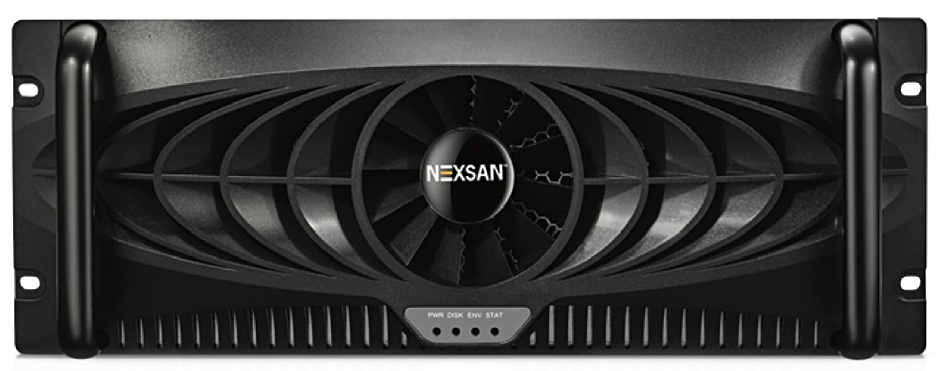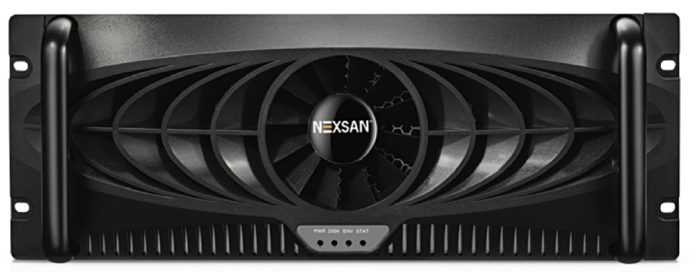Nexsan has re-engineered the BEAST entry-level block storage array to use QLC flash and 16TB disk drives, providing lower latency, more bandwidth and higher capacity.
The BEAST’s latest incarnation comes in two flavours, an Elite hybrid flash/disk and an Elite F all-flash system.
Surya Varanasi, CTO of StorCentric, parent company of Nexsan, issued a quote: “The new BEAST Elite storage platform with QLC flash provides a significant performance improvement over HDDs with industry-leading price/performance. This storage platform is ideal for customers who want extremely dense, highly resilient block storage data lakes, analytics and ML/AI workloads.”
The BEAST complements Nexsan’s high-performance E-Series SAN array and Unity file+block storage arrays. It has been around for a long time. There was a SATABeast array in 2009 with 60 drive slots filled with 1TB drives. By 2016 that had grown to having 60 x 8TB disk drives in the 4U chassis providing 480TB and scaling up to 1.44PB in 12U. These systems had the ability, using AutoMAID technology, to power down drives to save on power and cooling costs.
By 2019 the BEAST P was using 10 and 12TB drives. The new systems use higher capacity drives still, continuing along Nexsan’ high-density path while adding more connectivity and a lower latency all-flash option.
BEAST Elite
The BEAST Elite supports 14TB and 16TB disk drives. The maximum capacity is 960TB in the 4U base enclosure, and scales up to 2.88PB in a 12U chassis. It starts at 24TB. There are three expansion systems; the E18X, E48X and BT60X, varying by the number of drive slots.

The hybrid system supports 2.5-inch SSD hard drive and hard disks. These are TLC (3bits/cell) SSDs. They can be 1 drive write per day (DWPD) drives for read-biased workload use and ranging from 960GB to 15.36TB in capacity. Alternatively they can be 3DWPD drives for mixed read/write workloads with from 800GB to 3.2TB capacities.
The array software features encryption, snapshots, and support for asynchronous replication.
According to the datasheet there are up to 12x 16Gbit/s Fibre Channel or 1/10 Gbit/s iSCSI ports – three times more than in the BEAST P. Nexsan said the BEAST Elite is reliable enough to support deployments in ships, subway stations and storage closets outside an air-conditioned data centre.
The Elite array, with new controllers, delivers up to 150,000 IOPS and 25 per cent greater bandwidth than the prior generation. A spec sheet lists the bandwidth as more than 7.5GB/sec for writes and 5.4GB/sec for reads.
BEAST Elite F
This all-flash system supports 60 x 2.5-inch QLC solid state drives in 4U which can have capacities of 1.92TB, 3.84TB or 7.68TB. The maximum raw capacity is 460.8TB and that scales up to 1.38B using three of the s60-drive expansion cab. That’s slightly less than half the capacity of the BEAST Elite.
It has the same software and connectivity features as the Elite array.
The SSDs in the Elite and Elite F are all 2.5-inch form factor drives whereas the disk drives are 3.5-inch format. In both cases, the number of drive bays is the same – 60 in 4U. This means 3.5-inch drive bays are used throughout. More SSDs could be put in the 4U chassis if smaller 2.5-inch drive bays were used. This may come in a later generation of the BEAST Elite F.
The Elite F delivers 150,000 IOPS – the same as the Elite- and the same bandwidth numbers, according to its spec sheet. It derives its performance advantage over the disk drive-based BEAST Elite via lower latency. Nexsan has not listed latency details
The storage vendor has not yet release pricing and availability info.








